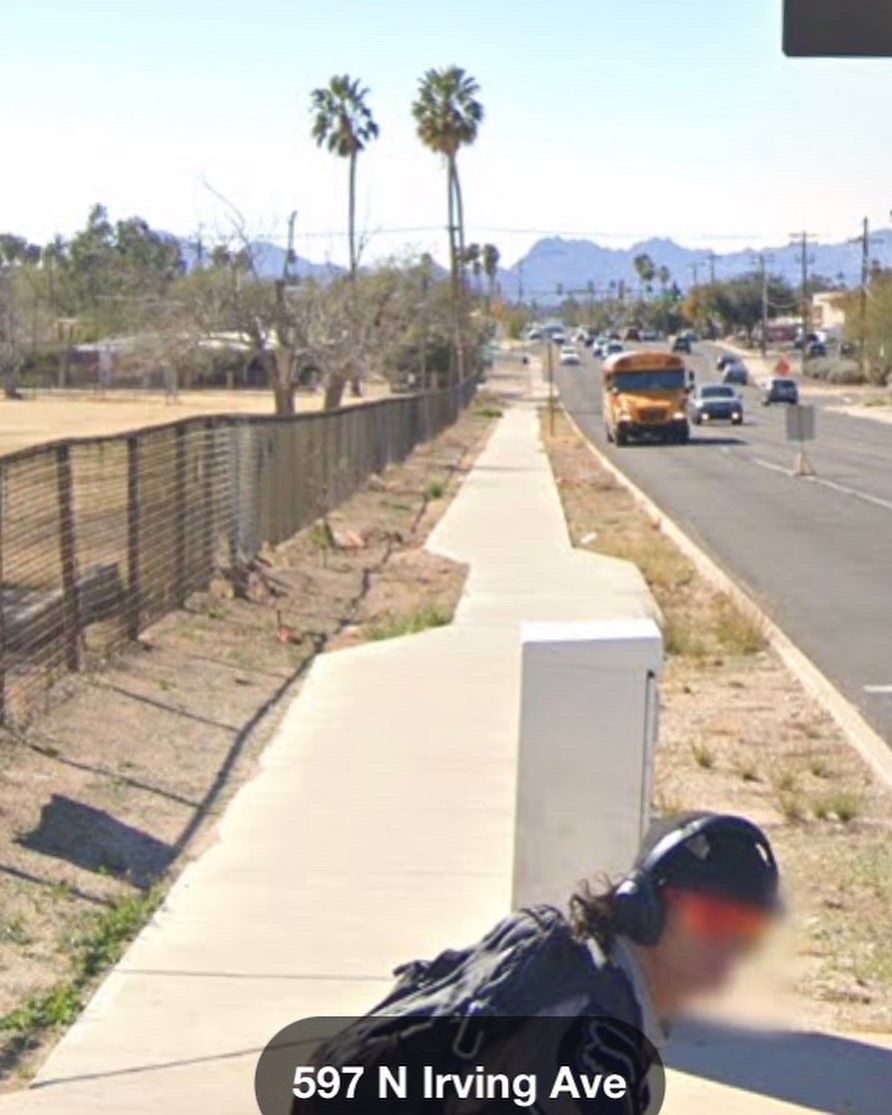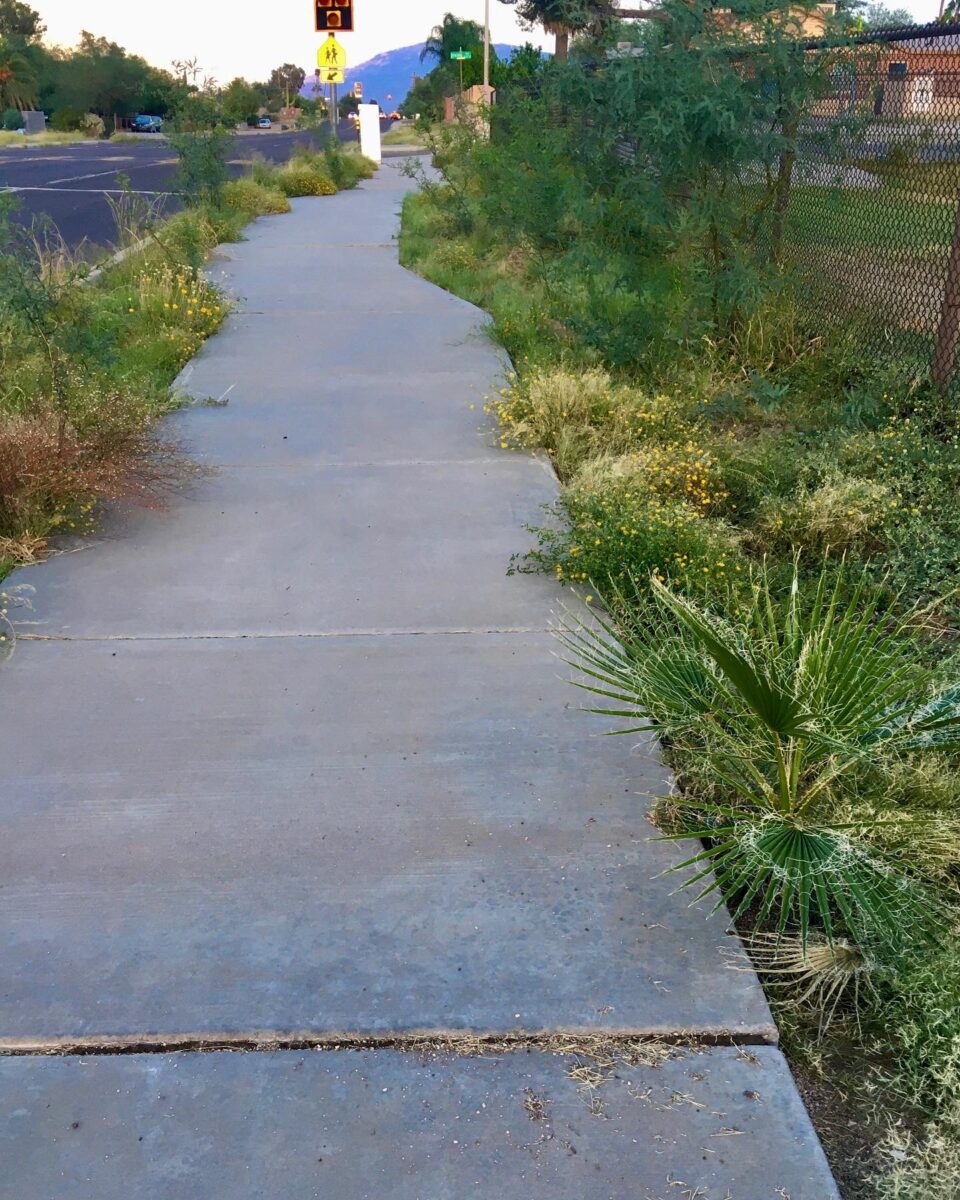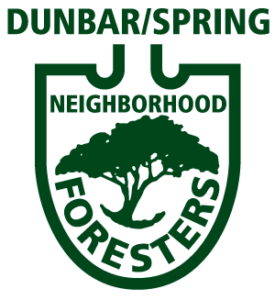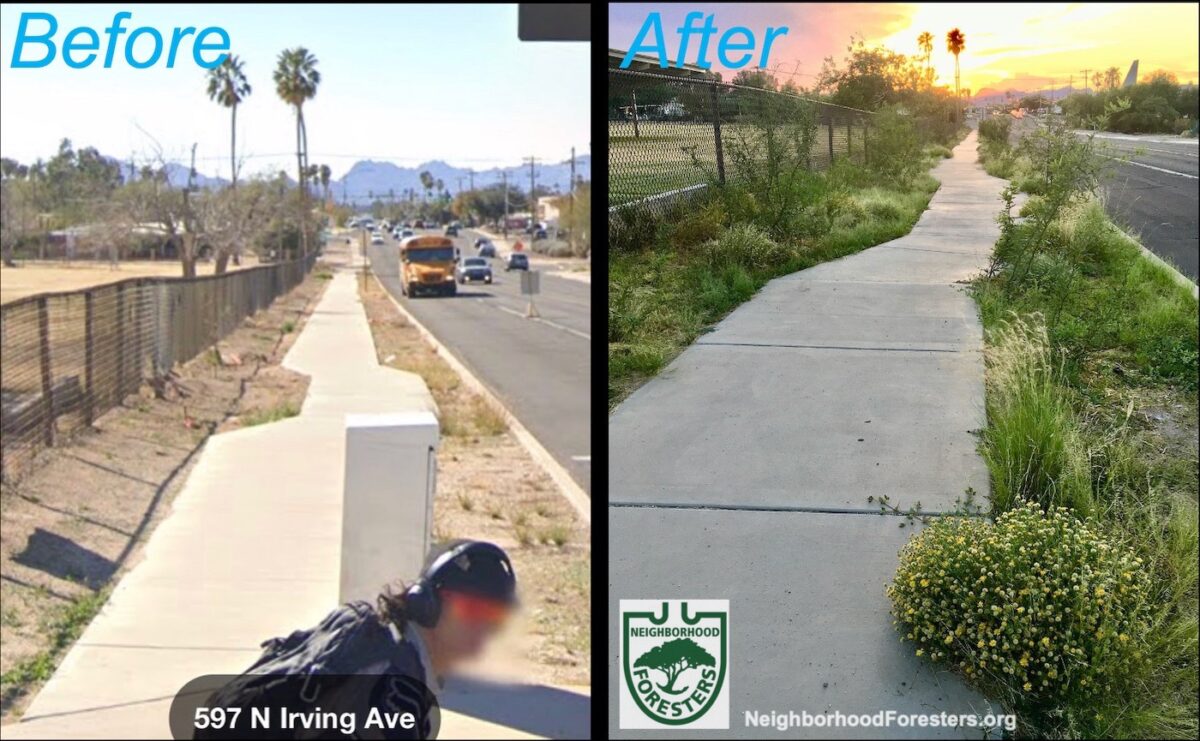“Maintenance” often keeps sections of our communities treeless and lifeless when beneficial volunteer plants are weeded out.

Photo from GoogleMaps street view
But if we hone our plant identification skills, we can instead learn to identify, encourage, and steward desired plants trying to grow and improve life for all, while only weeding truly problematic weeds.
Such is the case along a streetside sidewalk in the public right-of-way by a public school in the Peter Howell neighborhood of Tucson that used to be a human-maintained moonscape, but is now growing into a neighborhood volunteer-tended oasis.

Photo: Lucy Del Giorgio, 9-27-2022
According to Peter Howell Neighborhood Forester and volunteer Lucy Del Giorgio, the public right-of-way between 5th and Irving on the south side of 5th and bordering the north edge of Peter Howell School was regularly mowed by Tucson Unified School District grounds maintenance crews. But Lucy could see that volunteer trees in this sun-baked strip kept trying to grow, but would get mowed before they had a chance. So, Lucy spoke with the school staff and the grounds crew, and got them to stop mowing it in the winter/spring of 2021 with the understanding that Lucy and other volunteers would maintain the area.
Lucy then moved a little bit of on-site dirt and rocks to create a few rainwater-harvesting berms on the downslope side of four trees to that had started growing in useful spots that would not be a problem for pedestrians, bicyclists, or existing infrastructure. Many more volunteer plants came up surprising Lucy of how much diversity of seed was already in place despite the years of clearcutting mowing. The native plants that have since come up by themselves include mesquite trees, blue palo verde trees, desert marigolds, desert globe mallow, Xanthisma (species?), some of the native but weedy Mirabilis species, creosote, thymophylla pentacheata, native annual eriogonum and in the spring there were actually a few Phacelia and Mexican gold poppies.

Photo: Lucy Del Giorgio, 9-27-2022
Being a good steward, Lucy keeps the trees pruned away from the street and sidewalk, and weed wacks the invasive Bermuda grass—neither of which, at this point, take very much time. So, a decent return on a little time and effort investment.
Though it’s a good idea to team up with other neighbors in such stewarding activities to lessen the work for any one person, while making the stewarding more fun and social for all when you collaborate.
What transformations and life are you (or could you be) helping grow in your neighborhood?
Wanna share?
If so, send us (at NeighborhoodForesters@gmail.com):
• before and after photos (with date, or at least season and year, of photos) taken from the same photo point to show the transformation
• at least a paragraph of text on how the transformation was realized and is maintained/stewarded.
• name of your neighborhood
Wanna help grow a community of collaborative neighborhood foresters in your neighborhood?
Check out NeighborhoodForesters.org for ideas, tips, tools, and events

Wanna help support our Neighborhood Foresters efforts?
Please consider donating here

